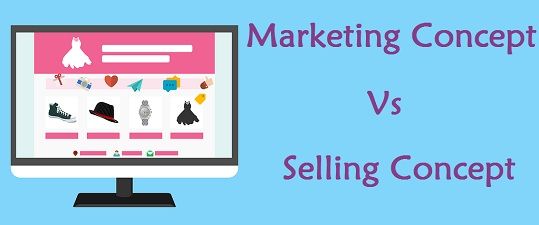Selling concept in marketing is based on the assumption that customers have inner needs. It ignores their wants and needs. However, it helps companies to avoid unsold inventory and create working capital.
This approach also ignores customer satisfaction and repeat buying. It believes that people will forget their disappointment with products if they are influenced by aggressive marketing tactics.
It is a form of marketing
Selling concept is a form of marketing that believes customers won’t buy products unless they are aggressively promoted. This type of marketing includes sales promotion, personal selling, and other means to boost overall product sales. However, it ignores traditional marketing management concepts like relationship building and customer satisfaction. As a result, it can be costly for the company.
This type of marketing was developed after the industrial revolution. Companies began producing in excess of what was demanded, leading to the need for promotional activities. In addition, the engineering skills improved, and mass production became the norm. This led to the creation of the sales concept, which focuses on pushing products to market and increasing the number of sales transactions.
The problem with this approach is that it is based on poor assumptions, such as the assumption that if you push customers to buy a product they will buy it again. This type of thinking is not sustainable in the long run. In fact, it leads to a vicious cycle of low customer retention and increased costs.
This is why so many brands end up making one-time sales. If you look at your own email inbox, you will see a lot of cold emails from software makers, banks and telecoms. This is because these brands rely on the selling concept to sell their products.
It is a form of advertising
The selling concept is a marketing strategy that focuses on liquidating excess inventory. It is used when a company produces goods that are not sold at their ideal price or when the demand for a particular product is lower than expected. It is also useful for unsought products, like life insurance or subscriptions to magazines. This approach is popular among political campaigns and companies that have a lot of inventory they want to sell quickly.
A key limitation of the sales concept is that it ignores customer needs and wants. This can result in poor quality products, low consumer satisfaction, and negative word of mouth. Additionally, this strategy is short-term and does not consider the lifetime value of the customer.
Using the sales concept can be dangerous for a business, especially if it is used as the only marketing concept. It ignores the other four marketing concepts, which focus on building relationships with customers, getting customer feedback, understanding the needs and wants of consumers, and creating a unique brand identity.
It can be difficult to distinguish between the sales concept and other marketing approaches. But a sales-oriented marketing strategy can include a number of harmful tactics, including aggressively pursuing sales without qualifying a lead or making false promises. It also may involve cold calling or flooding inboxes with emails.
It is a form of sales
Selling concept is a marketing philosophy that assumes that a company’s customers won’t buy enough of their products unless they aggressively promote them. Its focus is on sales maximization, and it ignores customer needs and satisfaction.
The selling concept works best when a company has an overstock or unsought product. For example, a candy manufacturer may produce too many chocolate candies and sell them at a loss to improve their sales figures. It can also be used for products with a low consumer demand, such as pharmaceuticals or beauty products.
This strategy is not suitable for all businesses and can be counterproductive if used alone. Brands that employ the sales concept may have a difficult time crossing-selling or up-selling to existing customers. They can also experience one-time sales only instead of repeat purchases. Companies that rely on this approach can easily exhaust their resources without improving the quality of their products or establishing relationships with their consumers.
Another issue with the selling concept is that it doesn’t consider the consumers’ buying preferences and assumes they won’t mind if they are disappointed with the product. This is a false assumption and doesn’t reflect the real world. In fact, if a customer is disappointed with a product, they will likely share their bad experiences with friends and family. This can affect the reputation of your business.
It is a form of persuasion
Selling concept is a marketing strategy that focuses on increasing sales without considering the needs of customers. It uses various methods to lure and convince consumers to buy products that they don’t need. It also ignores traditional marketing management concepts such as relationship building. This is an effective approach for unsought goods and services like insurance, funeral planning, encyclopedias, or door-to-door sales.
The main goal of this concept is to increase sales by using heavy promotion and persuasive marketing strategies. It is a short term plan that can be used to impact customer purchase behaviour in a competitive market space or when the company has excess inventory to clear. It is also used to promote new products and ideas that are not yet established in the minds of buyers.
This method has several benefits including increased sales and brand awareness. It is often employed by companies that produce too much of one product and need to reduce their stock levels. This approach can be very successful, especially if it is done well.
However, it is important to note that the selling concept does not work for all companies and industries. It is not suitable for products that are highly sought after by consumers or need to be bought by all. Moreover, this method of marketing does not take into account customer needs and preferences. In addition, aggressively pushing for a sale without properly qualifying the lead, disregarding a customer’s refusal, or making extravagant promises are examples of improper use of this concept.

